|
|
File
Great Rivers Museum – Rovigo
|
Piazzale San Bartolomeo 18 (Monastero Olivetano) – 45100 Rovigo (RO)
– Fax 0425 464546 |
  |
|
Summary
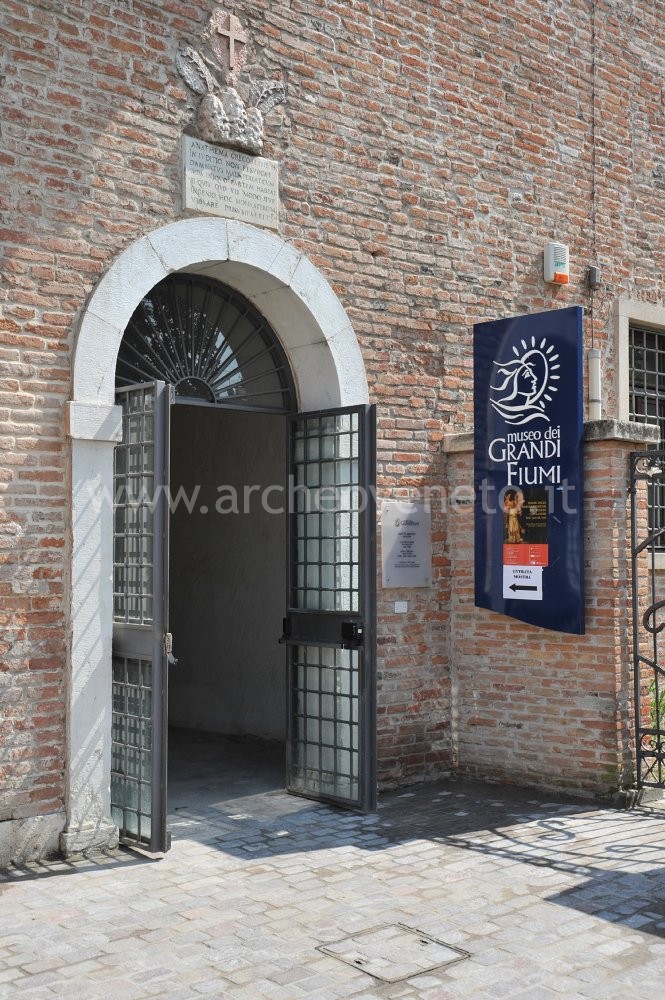
The Great Rivers Museum, recently moved to the ancient Monastry of Olivetani, gathers the archaeological finds from the area of the delta Po around Polesine, which is marked by the presence of two major rivers, namely Po and Adige. The museum layout is innovative thanks to the use of modern technologies which enables visitors better to enjoy the exhibition and enhances the value of the territory. The museum is divided into three sections: the Bronze Age, the Iron Age and the Roman Age sections.
Collection history
The museum of Great Rivers houses part of the collection originally owned by Camillo Silvestri, a distinguished collector who founded the Museum Silvestrium in the mid 17th century, later to become the modern Civic Museum. After his death, the remaining items were sold to Scipione Maffei and to the priests of the Episcopal Seminary in Rovigo.
|

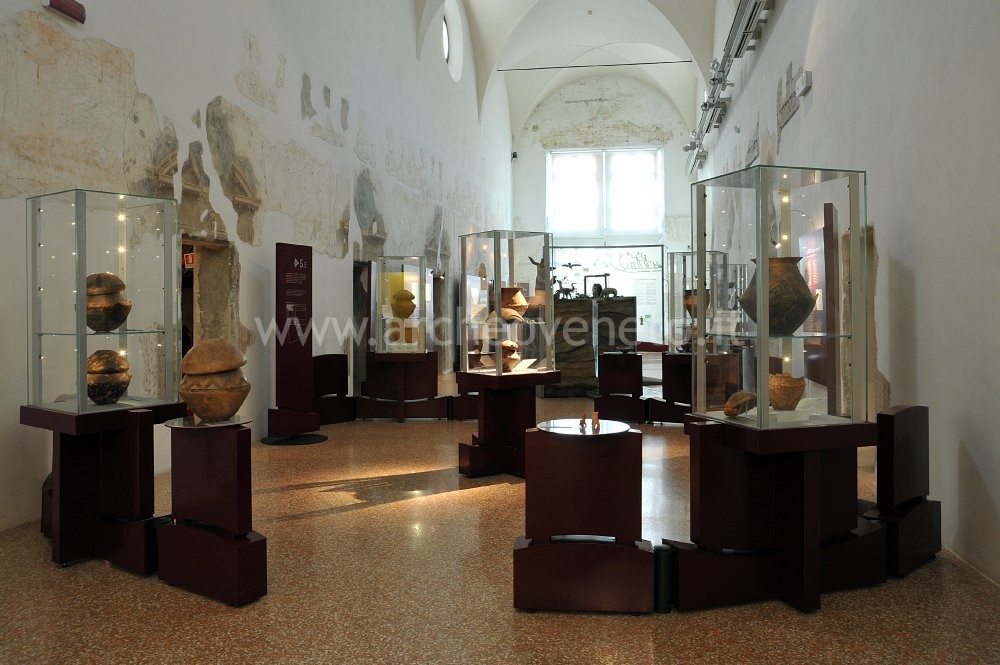 The visit to the museum starts with the Bronze Age. A large diorama, situated at the entrance of the room, aims at explaining the social and economic changes occurred in the different areas of Europe during the 2nd millennium BC. An interesting replica of the village of Canàr conveys the atmosphere of a pile dwelling near the Tartaro river during the early Bronze Age. The visit to the museum starts with the Bronze Age. A large diorama, situated at the entrance of the room, aims at explaining the social and economic changes occurred in the different areas of Europe during the 2nd millennium BC. An interesting replica of the village of Canàr conveys the atmosphere of a pile dwelling near the Tartaro river during the early Bronze Age.
A display case contains the objects collected in this area which was connected to the terramare culture. They include pottery, bones and worked flints.
Starting from the Middle Bronze Age, and in particular during the Recent Bronze Age (13th century BC) the area near the different tributaries of the Po river started to be populated, as witnessed by the embanked settlement of Larda di Gavello, closer to the sub-Appenine culture than to the terramare culture as far as the organization of the settlement and the building materials used are concerned. Besides a replica of the excavation site, there are also several ceramic items.
The settlement of Frattesina di Fratta Polesine is the populated area which provided the highest number of finds and information on the Late Bronze Age (12th-10th century BC). Room no 1 is dedicated to the widespread village of Frattesina and describes the activities carried out in the village, such as agriculture, animal farming but also food processing, spinning, weaving and clay working. Walking through the replica of a shed, the visit continues in the room dedicated to craftsmanship. This room focuses on deer antler, bronze and glass manufacturing. The thriving activity of these laboratories turned Frattesina into a major area of handicraft production in the heart of the commercial routes between northern-central Europe and Eastern Mediterranean.
The following section exhibits grave goods and biconic cinerary urns collected in the necropoleis of Frattesina (Narde and Fondo Zanotto). The most common burial ritual was cremation; yet, a multiple burial site with different burial rituals was discovered: one grave with two inhumation skeletons and the remains of a cremated body.
The last section is dedicated to worship. An enlarged replica of the sun disc found in Trundholm (Denmark), symbol of the cult of the Sun, and a set of symbolic-cultural objects collected in Frattasina are displayed. Noteworthy are a ceramic vase in the form of a cart found near a horse, two small idols with a human stylized aspect and worked bones.
|

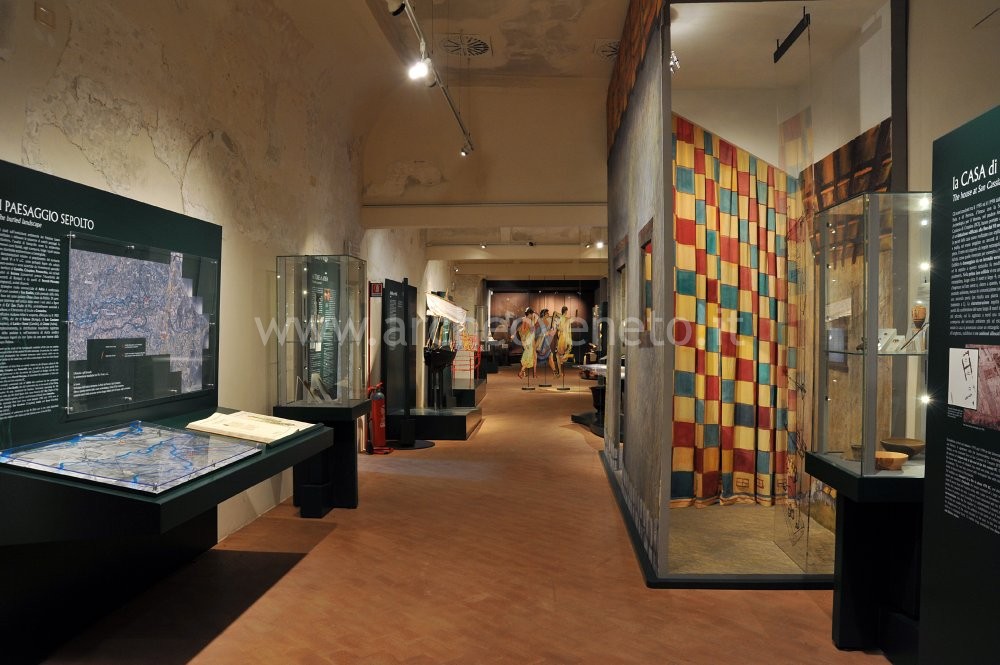 The diorama dedicated to the Iron Age shows that this historical period marked by the spread of writing, the presence of well-structured peoples and the development of urban clusters did not start simultaneously all over the Euro-Asian continent. As far as Italy is concerned, it is well known that there were different civilizations which occupied this territory at the beginning of the 1st millennium BC: in the south, the Magna Greciae one, in the centre the Etruscan one and in the north the Celtics and Veneto people. Panels and large and small scale replicas explain how these populations settled in this area. In the middle of the room there is the Knight of Gavello, an Etruscan-Padanian bronze statuette dating back to the 5th century BC. The diorama dedicated to the Iron Age shows that this historical period marked by the spread of writing, the presence of well-structured peoples and the development of urban clusters did not start simultaneously all over the Euro-Asian continent. As far as Italy is concerned, it is well known that there were different civilizations which occupied this territory at the beginning of the 1st millennium BC: in the south, the Magna Greciae one, in the centre the Etruscan one and in the north the Celtics and Veneto people. Panels and large and small scale replicas explain how these populations settled in this area. In the middle of the room there is the Knight of Gavello, an Etruscan-Padanian bronze statuette dating back to the 5th century BC.
The second part of this section is dedicated to the analysis of the landscape in the delta Po and Polesine. This study was carried out thanks to the paleo-environmental surveys and aerial photographs taken in this territory. Major centres in this area were Gavello, San Cassiano di Crespino and Adria. The Padanian-Etruscan culture absorbed numerous Hellenic traditions, both in the trading and economic sphere, such as sailing techniques, and in the everyday and private one, such as in the organization of symposia. Most of the information on everyday activities come from burial sites. The Etruscan necropolis of Balone, which can be traced back to the 5th century BC, contains numerous graves with grave goods characterized by Attic pottery and bronze vases. The most significant grave of this necropolis is grave no. 1, which contains an Attic kylix (470-460 BC) in red-figure style depicting Ade sitting down and an Attic column krater (475-450 BC) in red-figure style depicting Peleus abducting Thetis and three male figures, attributed to Deepdene Painter and his circle.
|

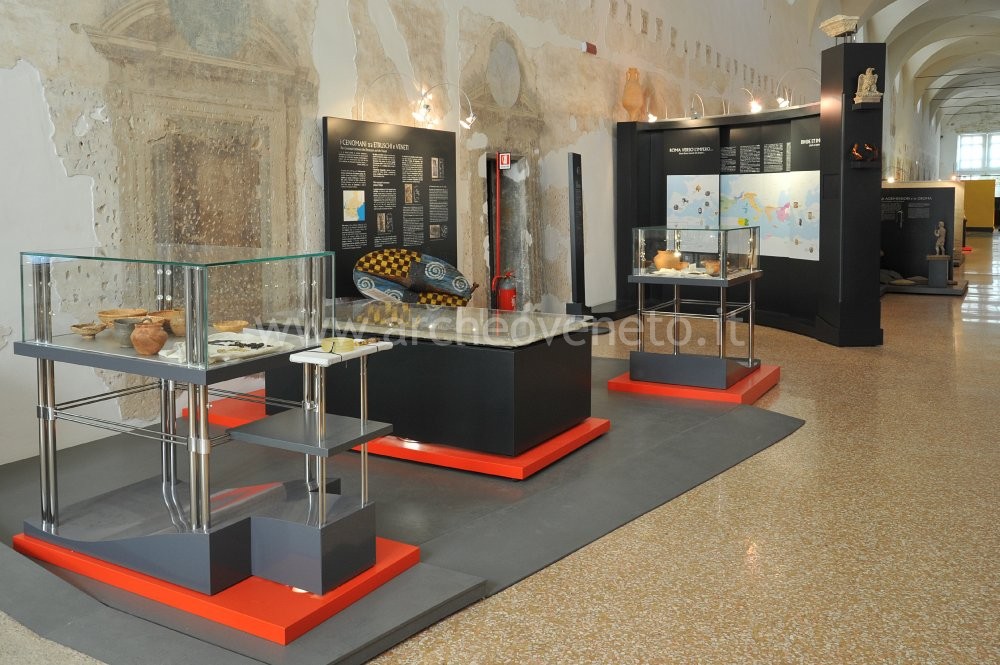 The section devoted to the Roman Age offers a picture of the antropization and environmental changes occurred in the area of Polisine during a time span ranging from the 2nd century BC to 2nd century AD. The visit starts with the introduction of the important trade relations established with the Celtic tribe called Cenomans who settled in the southern Verona plain, as witnessed by the necropolis of Lazisetta (VR) discovered in 1998. More than 180 cremation burials were discovered. This room displays a replica of a pit burial with rich metallic grave goods, composed of weapons, fibulae and a coin, all from the same burial. The section devoted to the Roman Age offers a picture of the antropization and environmental changes occurred in the area of Polisine during a time span ranging from the 2nd century BC to 2nd century AD. The visit starts with the introduction of the important trade relations established with the Celtic tribe called Cenomans who settled in the southern Verona plain, as witnessed by the necropolis of Lazisetta (VR) discovered in 1998. More than 180 cremation burials were discovered. This room displays a replica of a pit burial with rich metallic grave goods, composed of weapons, fibulae and a coin, all from the same burial.
The following part of the section is devoted to Roman public infrastructures built to organize the conquered areas. Noteworthy are the replica of a Roman road with its typical humpback structure and a replica of a wooden bridge crossing the Rhine River commissioned by Caesar in 55 BC and built in just 10 days.
In front of this section, there is the replica of the Peutinger Table, an interarium pictum, showing the maps of the territories known at that time and all viable roads.
The visit continues in two small rooms which display settings, casts and replicas in order to illustrate the social and cultural aspects of the Roman world, strictly linked to the building sector. Room no. 1 houses a replica of a Roman theatre; room no. 2 contains different rooms of a country villa (villa rustica). In the area of Polisene, the importance of the country villa situated in Chiunsano, between Ficarolo and Gaiba is well known. This villa was inhabited during the Republican Era in the 4th century AD, although sporadically. The objects collected during the excavations are exhibited in the display cases of this room and include mainly items of clothing and accessories, votive statues, fragments of glass vases, surgeon’s tools and kitchen ware.
The following part of the Roman section focuses on centuriea, coins and measurement units. It contains a replica of a groma, an important instrument used to divide the territory into centuriea, Imperial coins and weights for steelyard balances of different shape and size, from Chiunsano and other sites in the area of Polisene are exhibited.
Four fragments of military diplomas and other metallic objects, such as spear heads and items of clothing, were collected in these sites.
The last section of the museum is devoted to funerary rituals, with items from two necropoleis, one in Bergantino and one in Bassantina. The most popular funerary ritual was cremation, yet several burials “alla cappuccina” (under tiles), such as the one in Colombarola (Pontecchio), were discovered.
|
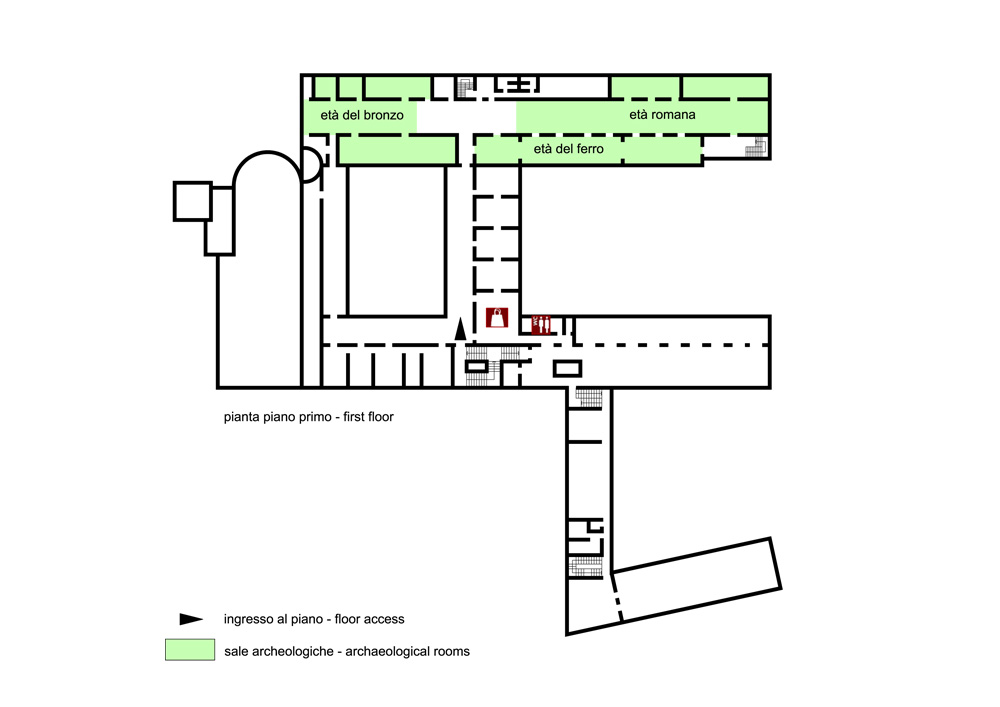
Admission: Negli orari di apertura
Ticket: Si
Price: 3,00 € full fare; 1,50 € reduced fare
 School access School access
 Disabled access Disabled access
Opening Days
| Tipology |
When |
Specs |
| Summer/Winter |
Tuesday |
9.00 – 13.00 |
| Summer/Winter |
Wednesday |
9.00 – 13.00 |
| Summer/Winter |
Thursday |
9.00 – 13.00 |
| Summer/Winter |
Friday |
9.00 – 13.00 |
| Summer/Winter |
Saturday |
10.00 – 13.00 e 16.00 – 19.00 |
| Summer/Winter |
Sunday |
10.00 – 13.00 e 16.00 – 19.00 |
Recommended tour time (minutes): 90
 Guide a stampa Guide a stampa
Brochure
Italian
 Information boards Information boards
Italian, English
 Captions under exhibits Captions under exhibits
Italian, English
 PC learning points PC learning points
 Multilingual ads: Inglese Multilingual ads: Inglese
 Guided Tours Guided Tours
 Educational activities Educational activities
 Educational workshops Educational workshops
 Library and documentation centre Library and documentation centre
 Other activities Other activities
| Verso il Museo dei Grandi Fiumi, Atti del Simposio Internazionale (Rovigo, 5-7 marzo 1998) 1998, Rovigo, pp. 27-33. |
| Esposizione permanente dell’età del Bronzo e introduzione all’età del Ferro. Museo dei Grandi Fiumi 2001, Rovigo. |
| Terre emerse. Storia ambiente tra due fiumi 2001, a cura di Peretto R., Rovigo. |
| Museo dei Grandi Fiumi. Età del Bronzo, 5 2003, Rovigo. |
| Museo dei Grandi Fiumi. Età del Ferro, 6 2003, Rovigo. |
| Musei e raccolte archeologiche del Veneto 2004, a cura di Di Mauro A., Dosson di Casier, pp. 69-70. |
| Bonetto J. 2009, Veneto (Archeologia delle Regioni d’Italia), Roma, pp. 379-382. |
|

